In today’s remote work landscape, creating a functional home office in limited space has become essential. Whether you’re working with a dedicated room, a corner of your living room, or even a closet, these 15 small home office ideas will help you maximize productivity without sacrificing style.
1. Vertical Storage Solutions
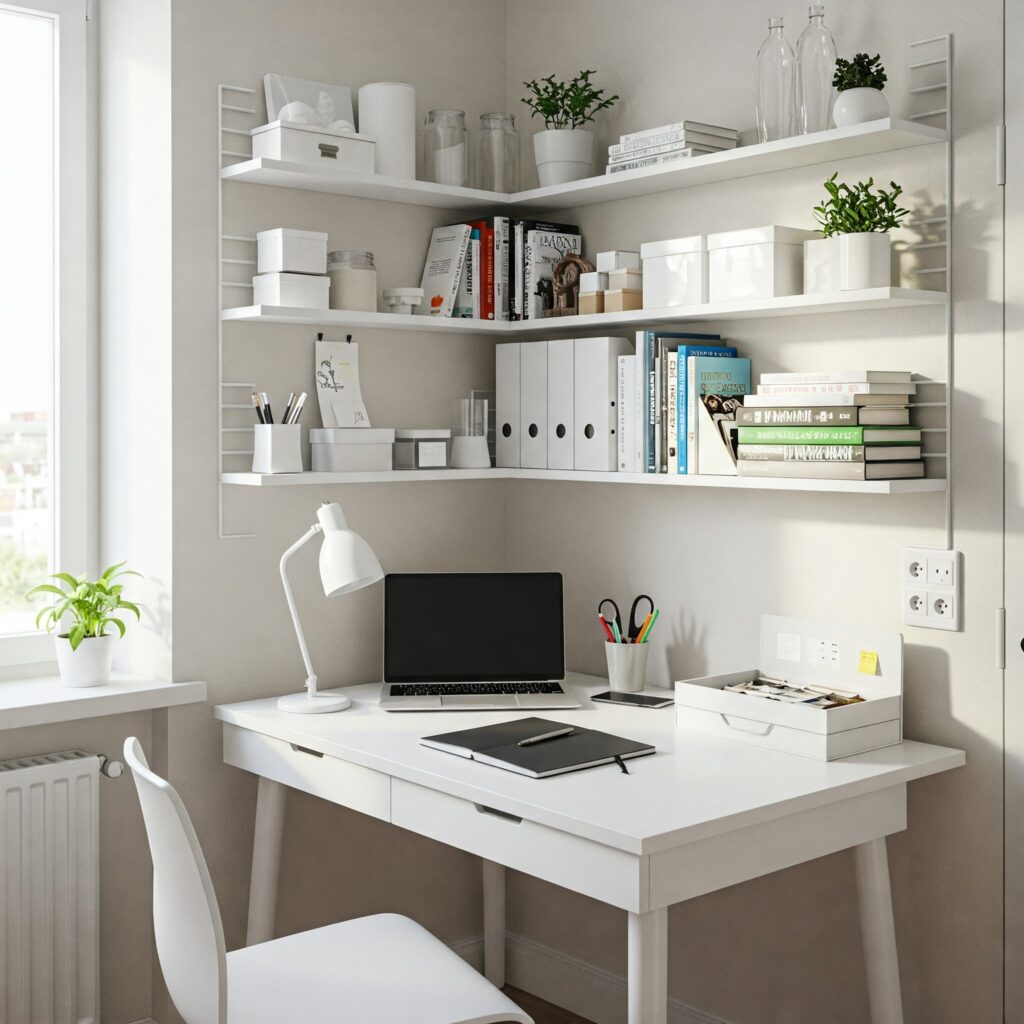
When floor space is limited, think upward. Wall-mounted shelving, floating desks, and tall, narrow bookcases can dramatically increase your storage capacity without expanding your footprint. Consider adjustable shelving systems that can be reconfigured as your needs change.
2. Multi-Purpose Furniture
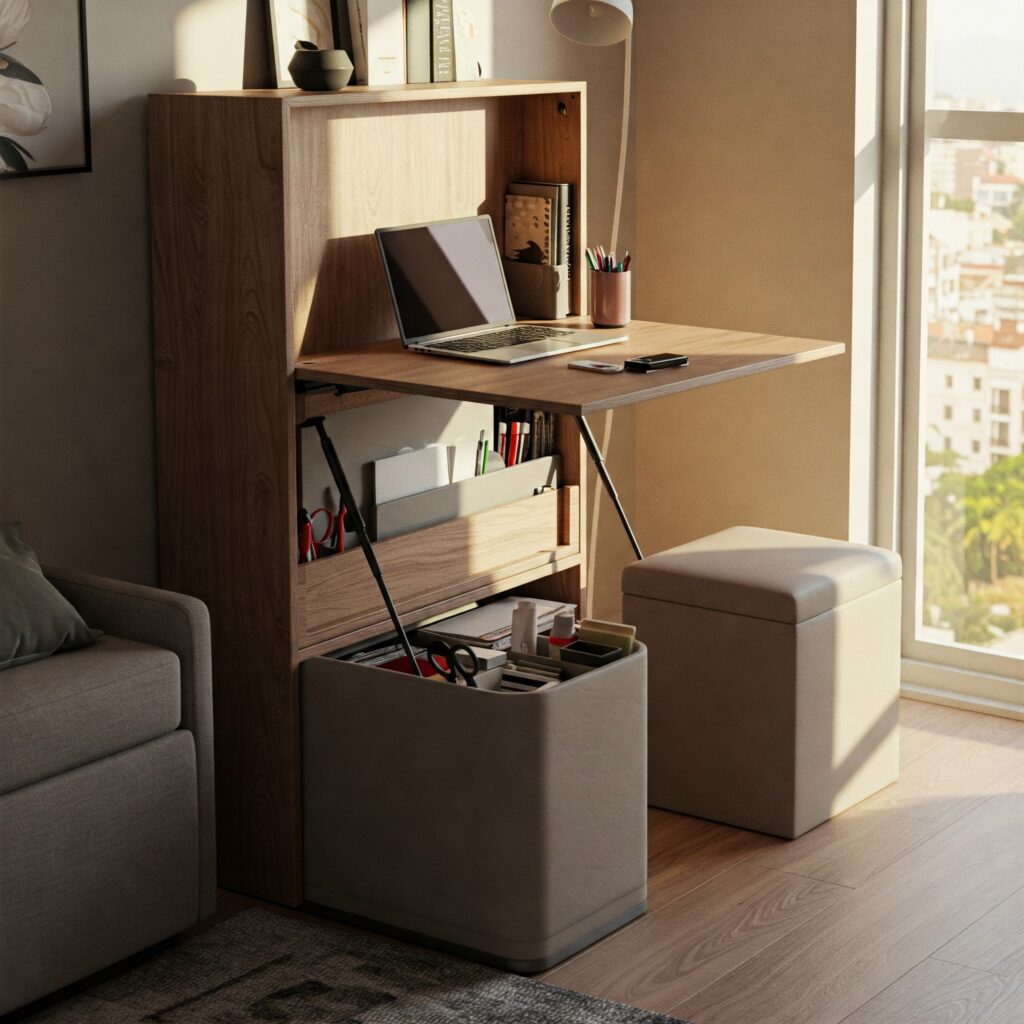
Invest in furniture that serves multiple functions. A desk that doubles as a dining table, a storage ottoman that works as extra seating, or a murphy bed with a built-in desk can help you maximize your space’s utility throughout the day.
3. Closet Conversion
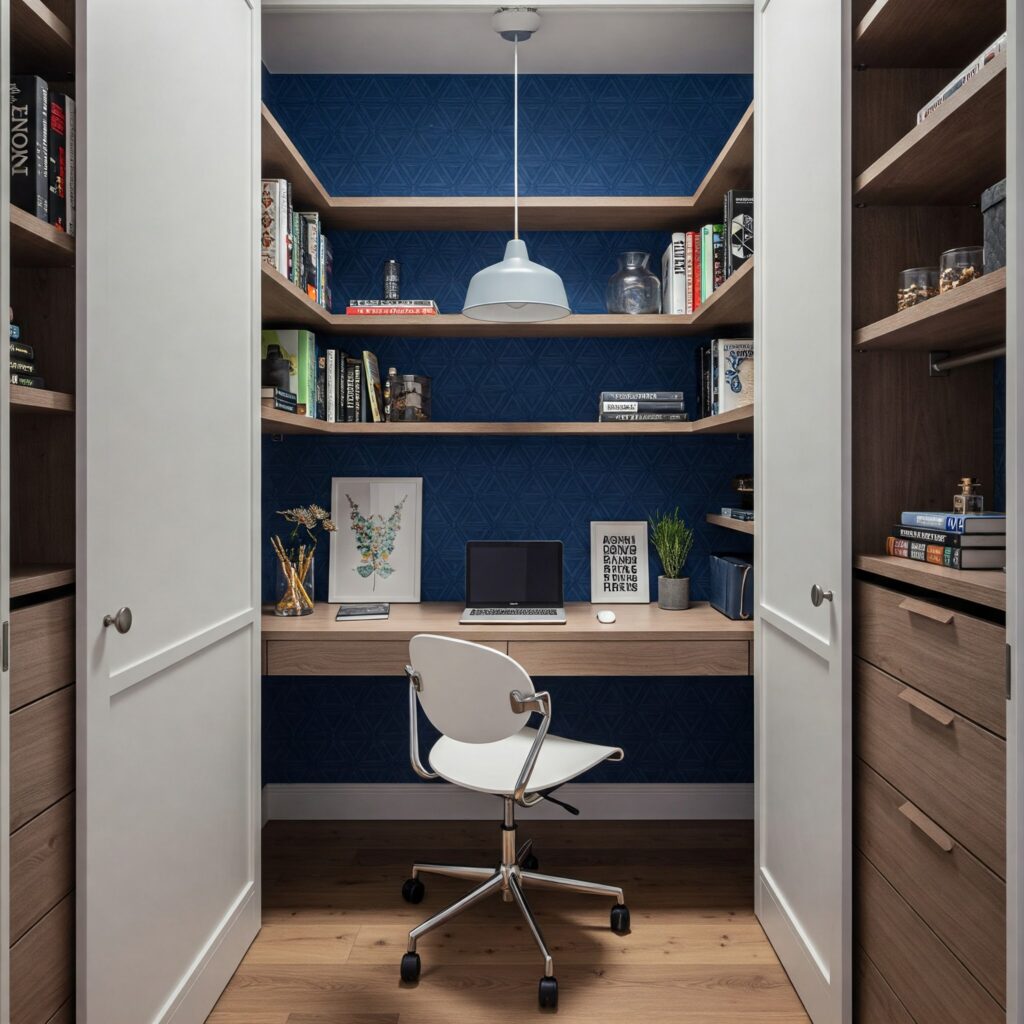
Don’t overlook unused closet space. By removing the doors and adding a small desk and shelving, you can create a dedicated “cloffice” that can be concealed when not in use. Add proper lighting and a pop of color on the back wall to make the space feel intentional.
4. Corner Desks
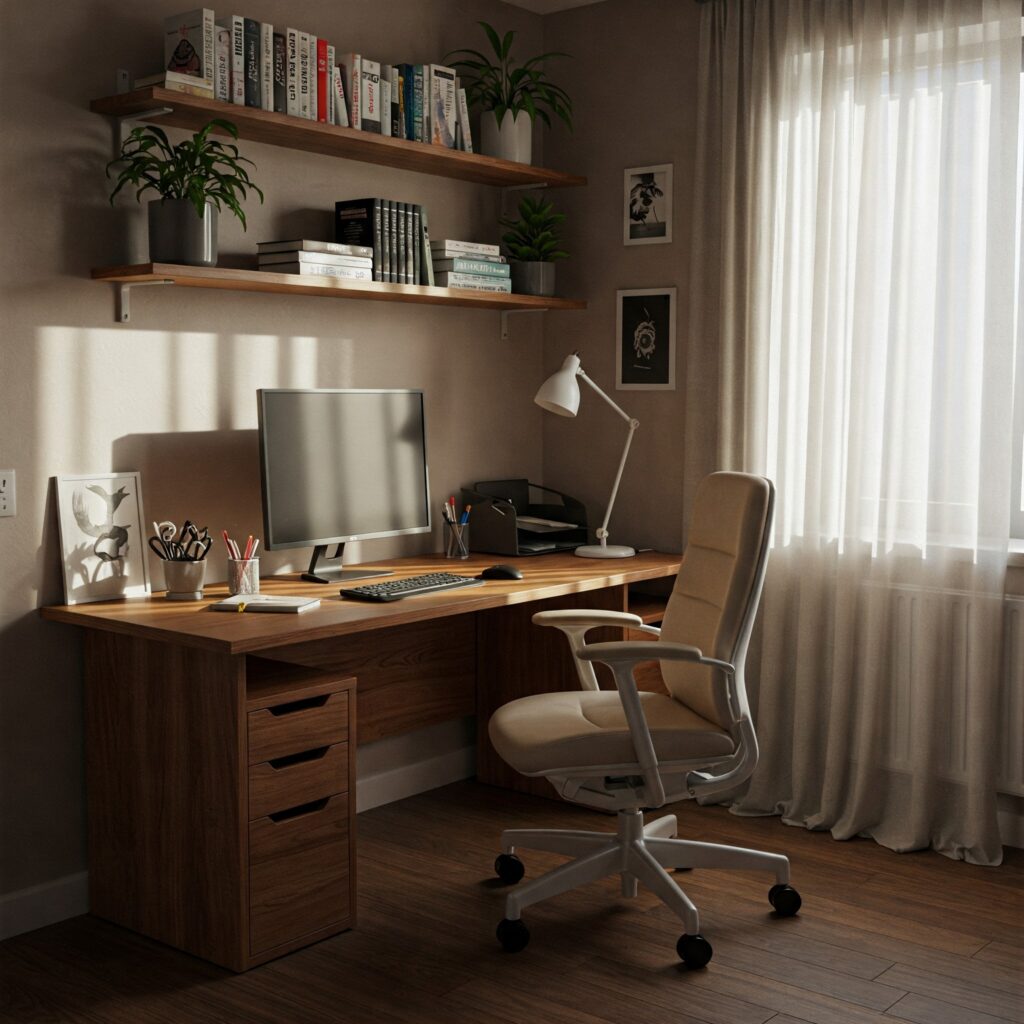
Corner spaces are often underutilized. A corner desk fits snugly into these awkward spaces, providing ample workspace without protruding too far into the room. L-shaped designs offer even more surface area for your computer, paperwork, and accessories.
5. Foldable Workstations

Instead of a basic foldable workstation, opt for a wall-mounted desk with integrated storage compartments. These compact solutions not only save floor space but also provide shelves or cubbies for office supplies, documents, and décor. When paired with a stylish chair, they can turn even the smallest wall into a functional mini office.
6. Compact Desk Nooks
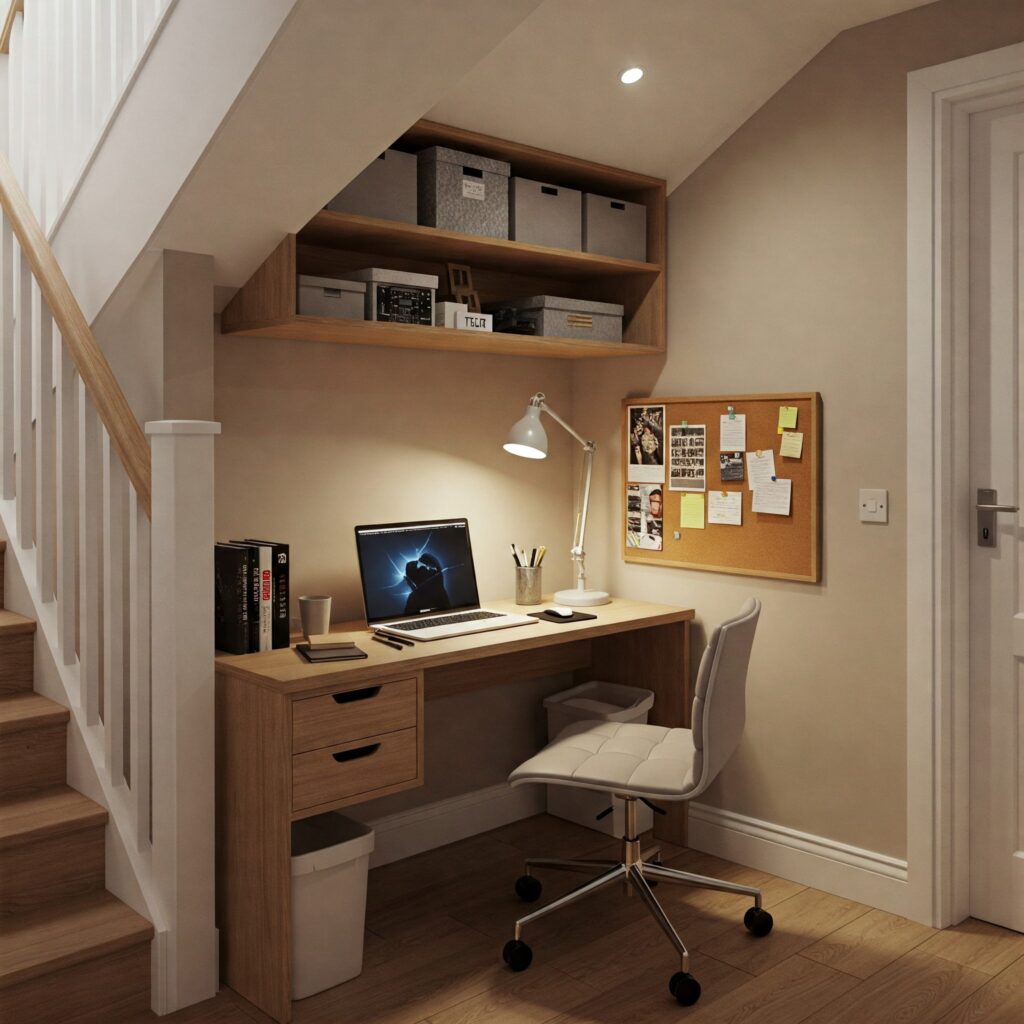
Look for overlooked nooks around your home — like the space under a staircase, beside a window, or in a hallway alcove. A slim-profile desk and a wall-mounted shelf above can transform these forgotten spots into efficient work zones. Add a task light and a small pinboard for notes and inspiration, and you’ve got a surprisingly effective office corner.
7. Natural Light Optimization
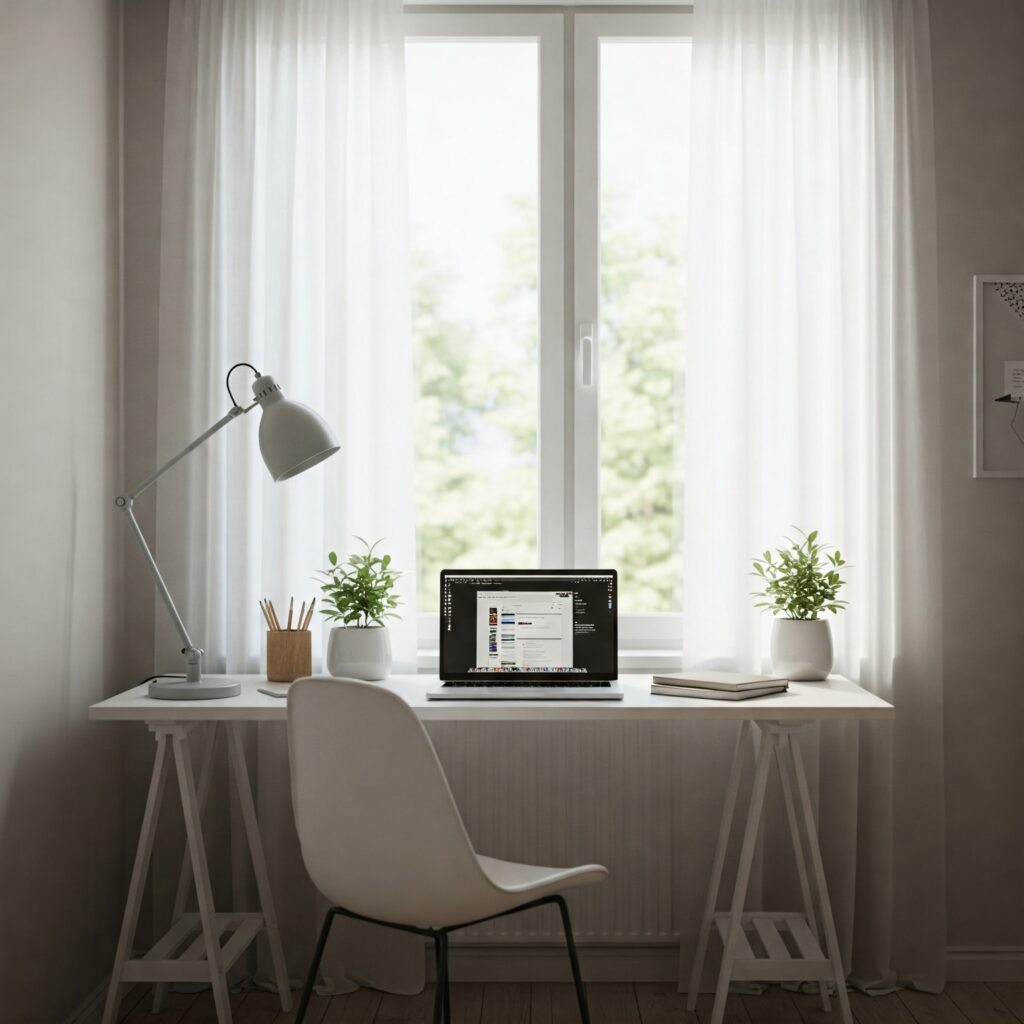
Position your desk near a window whenever possible. Natural light not only reduces eye strain but also improves mood and productivity. If window access isn’t available, invest in full-spectrum lighting that mimics natural daylight.
8. Minimalist Cable Management
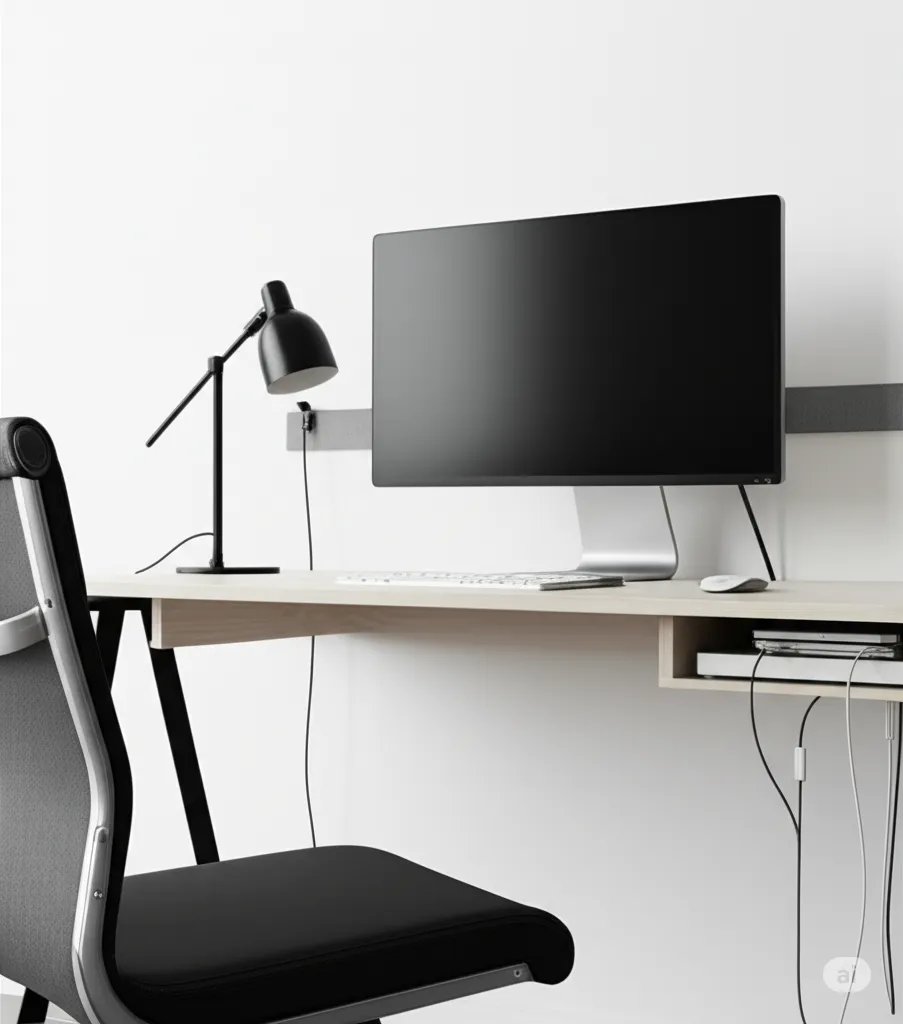
Nothing makes a small space feel more cluttered than tangled cables. Use cable clips, cord covers, and wireless technology when possible. Consider furniture with built-in cable management systems to keep your workspace tidy and professional.
9. Wall-Mounted Monitors

Free up valuable desk space by mounting your monitor on an adjustable wall bracket. This ergonomic solution improves posture while creating more room for essential tasks and supplies.
10. Dual-Purpose Room Dividers
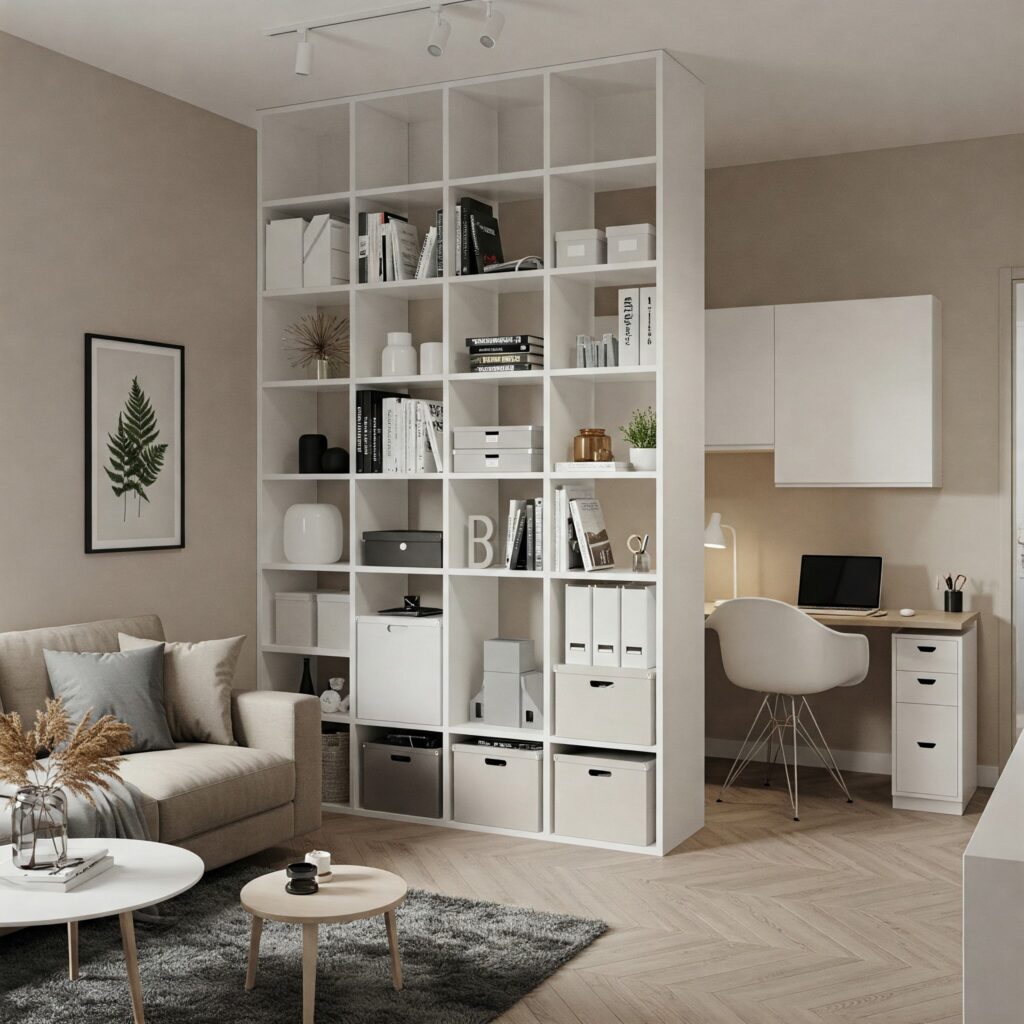
In open-concept spaces, room dividers with built-in storage can create privacy while adding functionality. Look for options with shelving, cabinets, or pinboards to maximize their utility in your workspace.
11. Hidden Storage Solutions
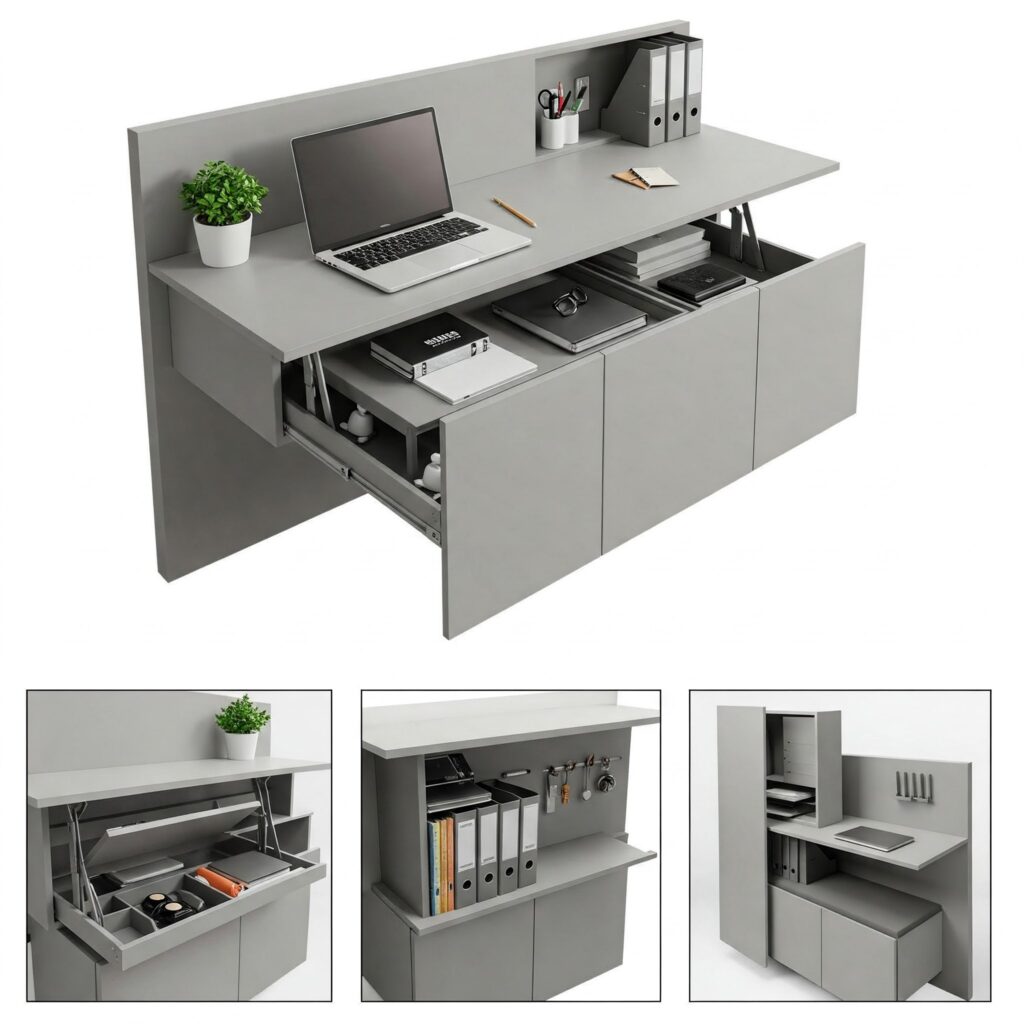
Make use of unexpected storage spaces like under-desk drawers, floating cabinets, or storage benches. Magnetic strips and pegboards can keep frequently used items accessible without consuming valuable desk space.
12. Strategic Color Schemes
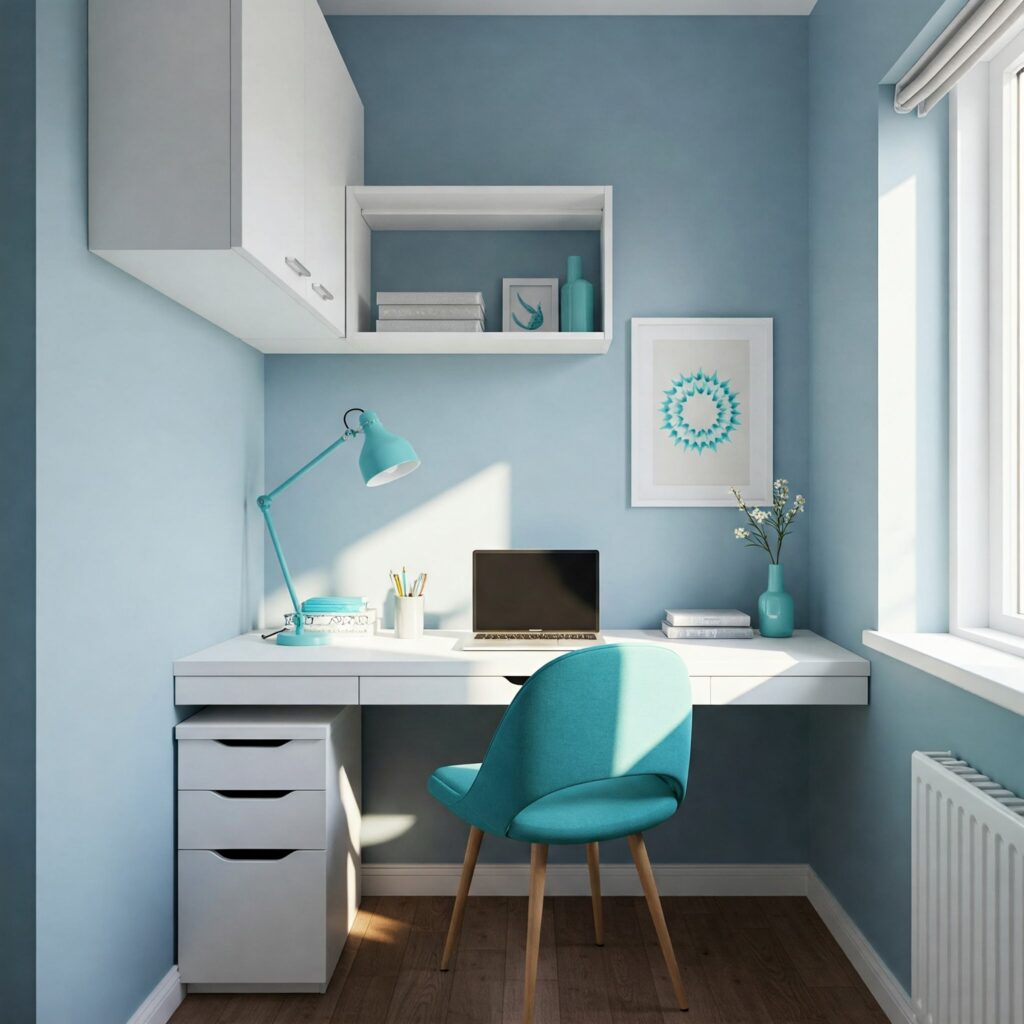
Light, neutral colors make small spaces feel larger and more open. Consider a monochromatic color scheme with strategic pops of color to create visual interest without overwhelming the space. Cool tones like blues and greens can promote focus and calm.
13. Ergonomic Compact Furniture
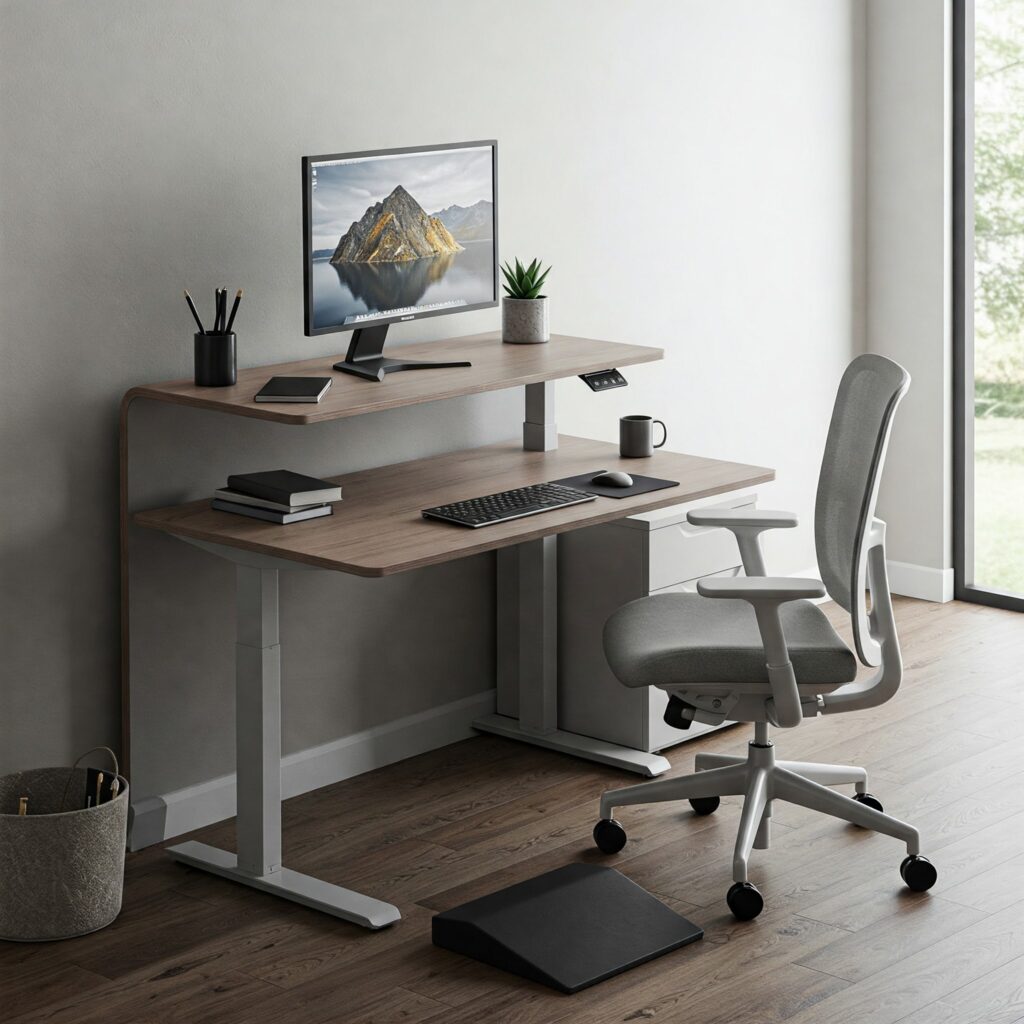
Don’t sacrifice comfort for space. Invest in ergonomic furniture designed specifically for small spaces. Many manufacturers now offer compact ergonomic chairs and adjustable desks that don’t compromise on function.
14. Vertical File Systems
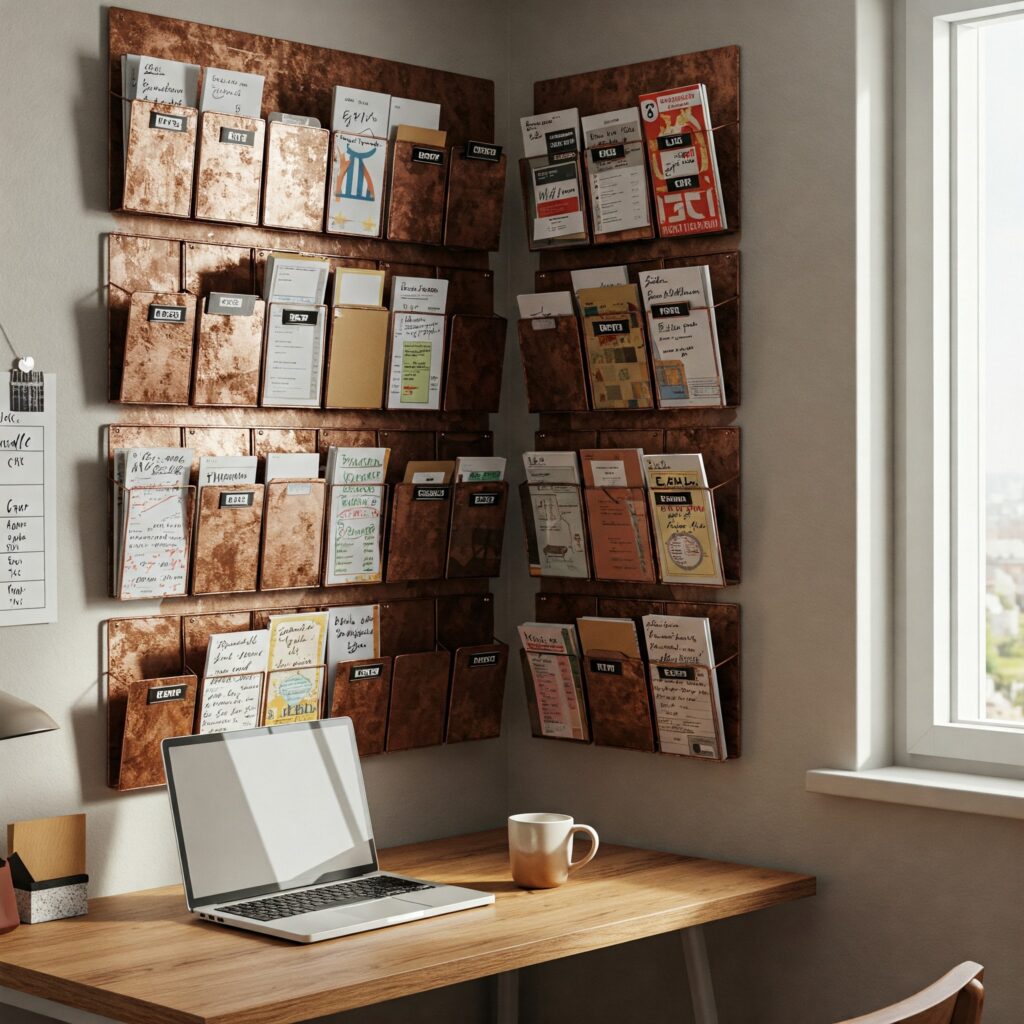
Replace traditional file cabinets with vertical wall-mounted file organizers. These keep important documents accessible without consuming valuable floor space and can add a decorative element to your office walls.
15. Smart Small-Space Technology
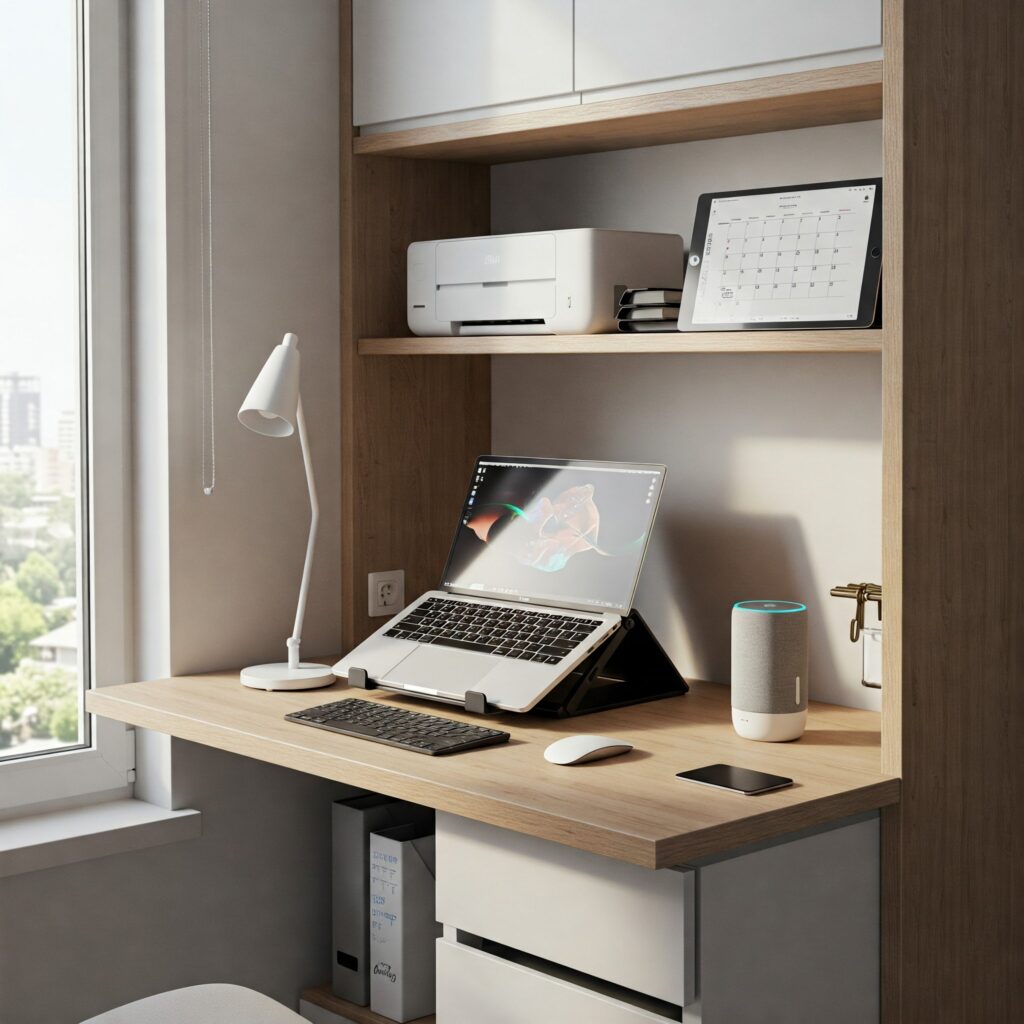
Embrace technology designed for small spaces. Consider compact all-in-one printers, laptop stands that fold flat when not in use, and wireless charging pads that eliminate extra cables. Voice-controlled smart home devices can also help manage your space efficiently.
Conclusion
Creating a productive home office in a small space requires thoughtful planning and creative solutions. By implementing even a few of these ideas, you can design a workspace that supports your professional needs while fitting seamlessly into your home environment. Remember that the most effective small home offices balance functionality with personal style, creating a space where you’ll actually want to work.

